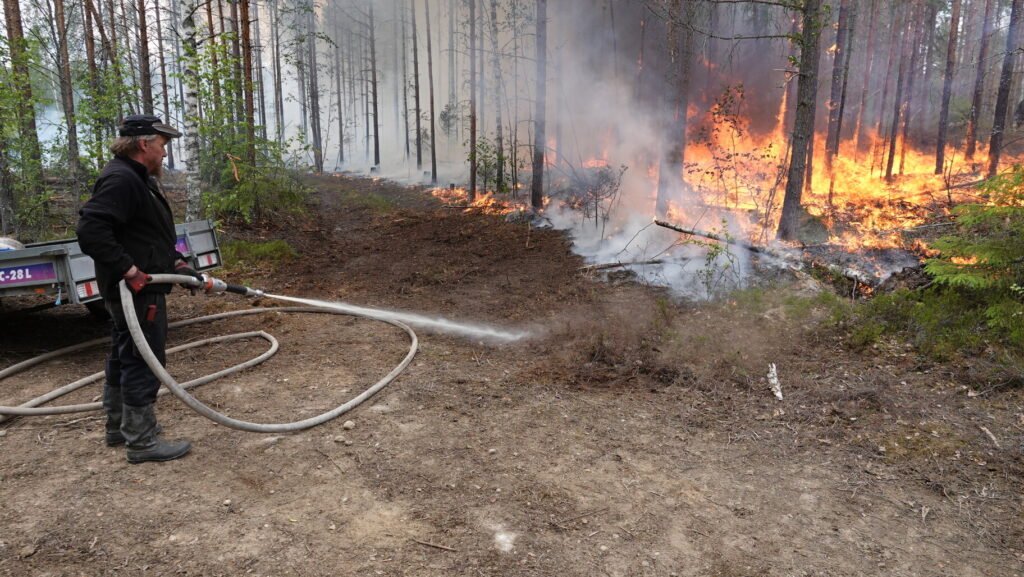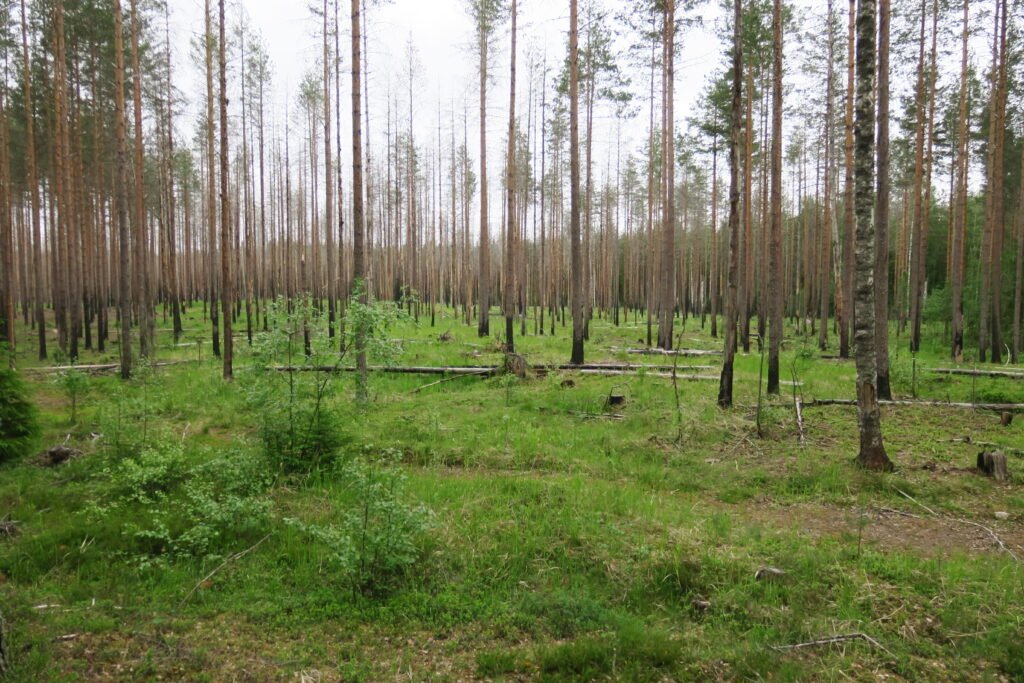
Prescribed burning in Finland. Photo by G. Brazaitis
An international scientific conference “The Role of Fire in the Forest Ecosystems. Prescribed burning as a Tool for Nature Management“ was held on March 17 in response to an increasing focus on biodiversity protection and close to nature forest management practices.
The topic was presented by foreign experts from United States of America, Sweden, Finland and Latvia, as well as by scientists from Vytautas Magnus University Agriculture Academy who are conducting forest history and ecology research in Lithuania.
The conference was organized by Environmental project management agency and Vytautas Magnus University Agriculture Academy implementing LIFE integrated project “Optimizing the management of Natura 2000 network in Lithuania“. The main aim of the project is to ensure the protection of the most valuable nature territories in Lithuania, which belong to Natura 2000 network.
“Forest fire safety is an important and necessary work of foresters, which they do really well,” – said Danas Augutis, Deputy Minister of the Environment, who welcomed the conference participants. – It is therefore natural that when society hears about fires, it sees fire in the forest as a threat only. However, we forest ecologists understand that uncontrolled forest fire and prescribed burning are two different things, and fire is necessary for the survival of some endangered species. This conference is an opportunity to speak professionally on the topic that has long been a taboo“, – told D. Augutis.
The remote online event attracted a lot of local and international interest – the conference was attended by over 300 specialists from various fields in Lithuania, as well as environmental experts from 36 countries of five continents, from neighbouring Latvia and Poland and to South Africa Republic and New Zealand. “Such a surprising interest, which was not hindered by even large time differences between countries, shows the relevance and necessity of this topic,“ said Birutė Valatkienė, “Naturalit“ project manager from the Environmental Project Management Agency.
“When hearing the word fire, the first association is usually related to fear and threat, but there are no unnecessary things in nature,“ – said one of the speakers, a researcher at Vytautas Magnus University, Agriculture Academy Prof. Vitas Marozas. – Lightning-induced forest fires have been a natural phenomenon for millennia, and some animals and plants have adapted to them and fire has become essential to their survival. I could mention the European roller, the black grouse, the western capercaillie, as well as pasqueflower which are familiar to many. As countries became more active in forest management and fire prevention, some natural habitats and species are in danger of extinction. As a result, other countries have been using an imitation of spontaneous fires in their landscaping for decades, called prescribed burning. It is a way recognized by environmental experts to help nature while avoiding harmful large-scale fires. So, in this scientific conference, we wanted to learn from more experienced foreign colleagues,” – said V. Marozas.

Forest in Finland, four years after the prescribed burning. Photo by G. Brazaitis
Lithuania as well as Sweden, Finland and Latvia lies in the boreal biogeographic region where the most widespread forest habitat is Western Taiga. Speakers from Nordic countries presented how prescribed burning has been used for more than 30 years for the restoration and maintenance of this habitat in their countries and what is the impact of prescribed burning to the biodiversity. Dr. Charles Ruffner from USA who collaborates with scientists from Vytautas Magnus University in fire ecology and forest fires history research presented prescribed burning and how fire can be applied in Lithuanian forests.
It is planned to test the prescribed burning measure in separate territories of Dzūkija National Park after careful preparation and necessary research evaluating its wider application possibilities and usefulness in the Lithuanian context.
